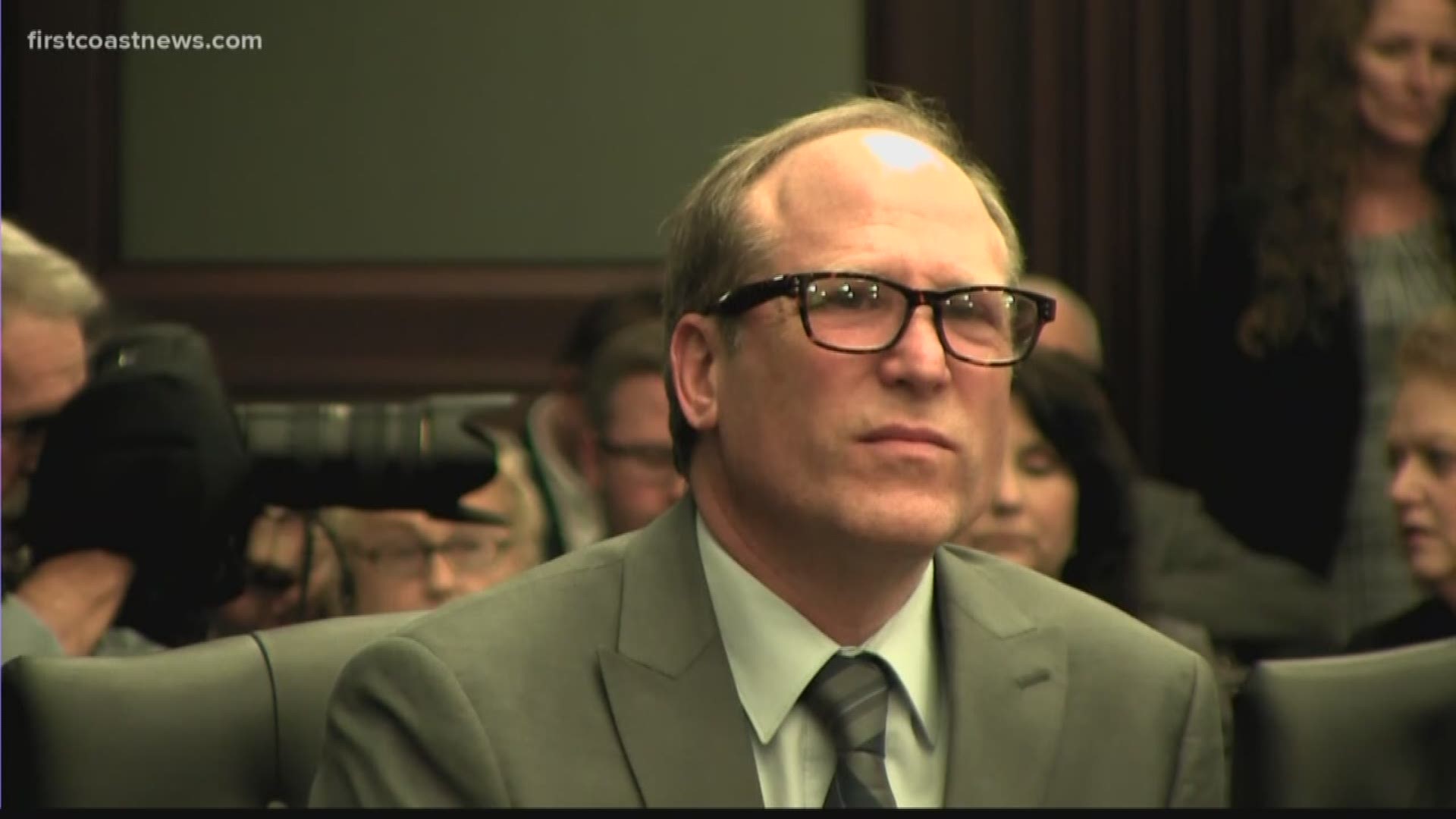JACKSONVILLE, Fla. — Twenty-six years after Bonnie Haim’s disappearance, a Duval County jury found that Michael Haim had killed his wife.
After the 23-year-old went missing in January 1993, her husband was almost immediately the police’s prime suspect. That only intensified after their 3-year-old son, Aaron, told a child investigator that “Daddy hurt Mommy.”
Even though police found her purse and car just hours after her disappearance, they couldn’t find her body, possibly due to a series of police missteps that included contaminating the purse, failing to document whether they sent a dog to search the Haims’ property and then not following up on a tip in 1996 that said she was buried at the Haim home.
Aaron Fraser was adopted by another family, and he would later win a wrongful death lawsuit against his father, giving Fraser ownership over his parents’ home.
Then in 2014, when he returned to that home to excavate parts of the backyard, he found his mother’s skull, re-opening a police investigation that would lead to his father’s arrest and eventual conviction.
“Anyone can imagine, even if it’s not a loved one, finding a skull, picking it up, just what that would do to somebody,” Fraser told a jury Friday after his biological father was convicted. “Not to mention, it’s your mother.”
Since his arrest, Michael Haim said he was innocent, and at trial he continued that claim, testifying “I love my wife, and I would’ve never hurt my wife.”
But the jury didn’t believe him, convicting him of second-degree murder. They also found three aggravating factors in a short sentencing trial, but they didn’t find that the murder was heinous, atrocious and cruel, a critical finding in the state’s efforts to seek a sentence above the maximum allowed under the guidelines. Because the murder occurred in 1993, Florida’s older, more lenient laws apply. Under those guidelines, Haim would face seven to 22 years, and he could get out sooner for good behavior.
Prosecutors have asked the court to sentence the 53-year-old above the guidelines, asking for a life term. The judge will have to decide if the aggravating factors — that Fraser witnessed the murder, that Michael Haim tampered with evidence and that the murder caused harm to Bonnie Haim and her family — warrant a tougher sentence. The sentencing hearing will begin May 17.
Haim’s own uncle and aunt testified that Michael and Bonnie Haim had marital problems, and she was planning to leave him and take their son. His aunt was the last person to talk to Bonnie Haim before her disappearance.
The next morning, police found her purse in a trash bin near an airport hotel, and they found her car parked at the airport.
While a medical examiner and a forensic anthropologist couldn’t say for certain if she had been shot, the anthropologist pointed to a circular injury on Bonnie Haim’s pelvic bone and said it was possible she was shot. The bones were also found with a .22-caliber shell, and Michael Haim owned a .22-caliber rifle.
Two fellow inmates testified that Haim confessed to them. Both men have made similar claims about other inmates in the past.
Haim’s attorneys, Tom Fallis and Janis Warren, argued that the body could’ve been moved to the house at a later time by someone other than Haim. They pointed to inconsistent police testimony — earlier, they said they had conducted thorough searches of the property in1993, but in court they called the searches “cursory.” Police were also unsure if they ever called dogs to the house to search for the body even though no reports documented dogs arriving.
In his closing, Heavener dismissed the idea that because the bones were in rough shape when they were found that the evidence wasn’t already clear enough. Haim, he said, “shouldn’t benefit from doing such a good job of burying that she wasn’t found until a quarter-century later.”
“They’re going to stretch a lot because they don’t have the evidence they need to prove beyond reasonable doubt,” he said. “They want you to make inferences that are just bizarre. ... They’ll take anything and stretch it to get that conviction because that’s what they do. That’s what their job is.”
Fallis argued the child investigator’s testimony about Fraser’s claims as a 3-year-old was weak. She didn’t record her interview with the child. She didn’t establish he knew truth from a lie. She didn’t establish when he thought he saw his father hurt his mother.
“Had this body been recovered in 1996, maybe this mystery could’ve been resolved,” he said.
Mizrahi urged the jury to bring closure to the case. “Let your verdict speak the truth. Let your verdict speak justice and find him guilty as charged.”
After Haim’s conviction, Fallis pleaded with the judge for more time before the sentencing phase of the trial began, saying he wasn’t prepared to argue the state’s aggravating factors and he would need time to prepare for any witnesses. If a subsequent appeal accused him of not providing good enough counsel, he said he’d concede it.
The state called on Fraser and Bonnie Haim’s sister, Liz Peak.
Peak said the murder split her family apart with even her own parents believing Michael Haim. She described what it was like having to bring Fraser to visitation before his adoption.
“We’d walk into the kitchen and he’d just fall on the floor and start pounding his fist on the floor until I grabbed him and I had to hold him until every visitation,” she said. “He would just be so frustrated. A 3 1/2-year-old didn’t know how to express his feelings. He was just bawling and didn’t know what to do.”
After the trial, Fraser and Peak and their other family stood silently by Mizrahi. They weren’t ready to talk about what happened, they said. But at long last, Mizrahi said, justice was done.
Andrew Pantazi: (904) 359-4310

